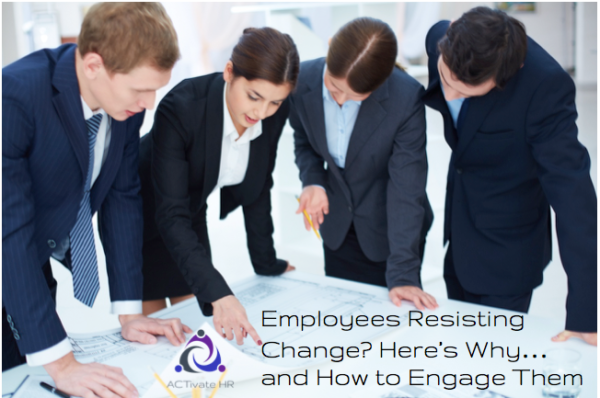Leaders and project managers often heave a large sigh and inwardly cringe when it comes to implementing changes. And employees resisting change is often the cause of these concerns.
With traditional change management programs and methodologies, implementing change consists of identifying and putting mitigation plans in place for a series of potential problems. As a result, organizations use problem solving techniques based on these steps:
- Identifying who will be affected
- Asking what could go wrong
- Coming up with the best solutions
- Finally, implementing those solutions
Unfortunately, there are consequences to this approach. The change itself could be positive. But employees dread the change process and see it as a challenge.
But it doesn’t have to be this way.
An alternative to the traditional change management approaches is an innovative, strength-based approach. In contrast to viewing change as something that needs managing, the strength-based method helps groups see change positively. As a result, this presents it as an opportunity to replicate past successes and achievements.
Appreciative Inquiry (AI)
The strength based approach to change stems from Appreciative Inquiry (AI). And communities have been using AI for decades.
It’s based on research showing the stories we tell and the words we use create and maintain our perceptions and reality. That means, teams share past achievements as they are led through stories of past achievements. Then, this builds the change process from a basis of current and past organizational successes and strengths.
So how does it work? Groups of employees work to identify the strengths, values, and enabling conditions within an organization that have led to previous successes.
Essentially, the group articulates and appreciates what is great about the organization and the people who work there. They then use these attributes to build a plan for an upcoming change…and to replicate the organization’s success.
Employees resisting change? Try this five-step process
As for how to do this? Employee groups go through a five step process of exploration and planning:
- Initiate: The process begins by creating and sharing a statement of the change that is desired. This frames the topic as a question and focuses on the positive. For example: “How do we create outstanding connections with customers”. This is in contrast to a more traditional topic of “How do we address customer complaints”
- Identify: As a group, the team identifies the strengths, values, and enabling conditions that have led to success in the past. Using these shared conditions, success themes specific to the company are identified. Essentially, they highlight the organization’s unique ‘best practices.’
- Imagine: Next, the group collaborates on identifying a shared vision of the future where the success themes are utilized to enact the necessary change. To identify the themes of necessary changes, groups can create and share aspirational statements.
- Innovate: Now that the group has a shared vision of the future, they work to identify what needs to happen to make their future a reality. They prioritize their ideas and agree on those which will have the most impact and should be implemented.
- Implement: Detailed action plans are created by employees with timelines, accountabilities, responsibilities and required resources identified.
With any change, thorough communication helps it go more smoothly. We cover helpful techniques for communicating and implementing your workplace harassment policy in this post.
An effective and impactful approach to change
This practical, down-to-earth process is successful in helping groups identify the most effective and impactful approaches for their desired change. With it, they build aspirational, yet achievable, action plans to ensure success. This flexible approach is effective with small groups as well as for organization-wide initiatives.
(Speaking of goals, we talk more about the goal-setting process in this post)
This process works for all kinds of change initiatives, from technology implementations to workplace culture change. Ultimately, this highly collaborative method results in better engagement and acceptance among employees. The secret sauce is in the fact it’s based on past achievements known to the participants.
Not sold on this option yet? The strength based model achieves faster and more sustained results than traditional approaches to change management!
Strength based approaches are a unique and refreshing option..especially when you’re dealing with employees resisting change. They work well for those who are struggling with achieving engagement during change and creating lasting results.
For more information on how we can help you use this approach in your organization, contact us at info@activatehr.ca. Information on other HR consulting services we provide can also be found here.
Don’t forget to follow us on LinkedIn too!
This content was originally published in 2017 and it was updated in 2021 just for you.
Did you learn a lot from this post about employees resisting change? Then here are three to read next:
- Employee Recognition: 10 Creative & Fun Ways to Thank Your Employees
- Implement Your Bullying Prevention Program without Chaos
- Effectively Investigating Workplace Bullying and Harassment Hazards and Incidents

